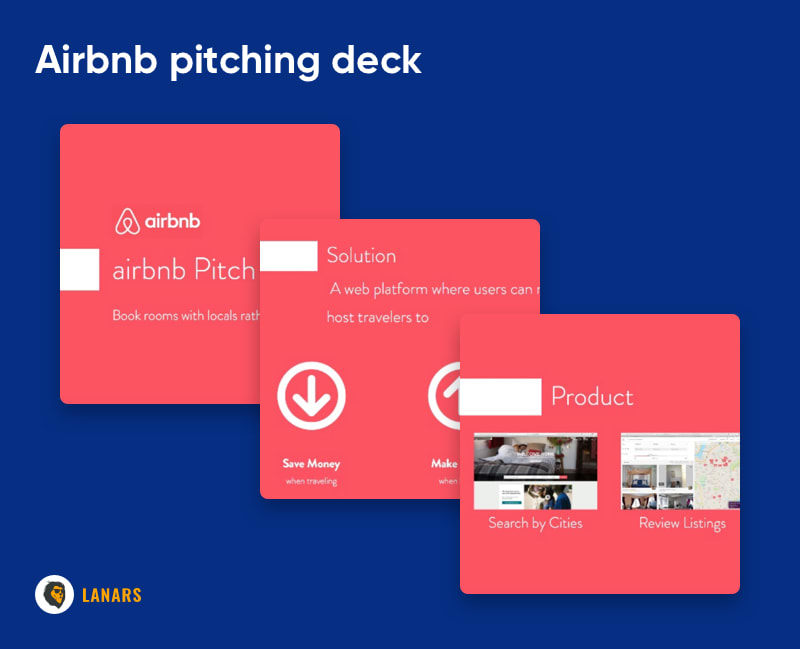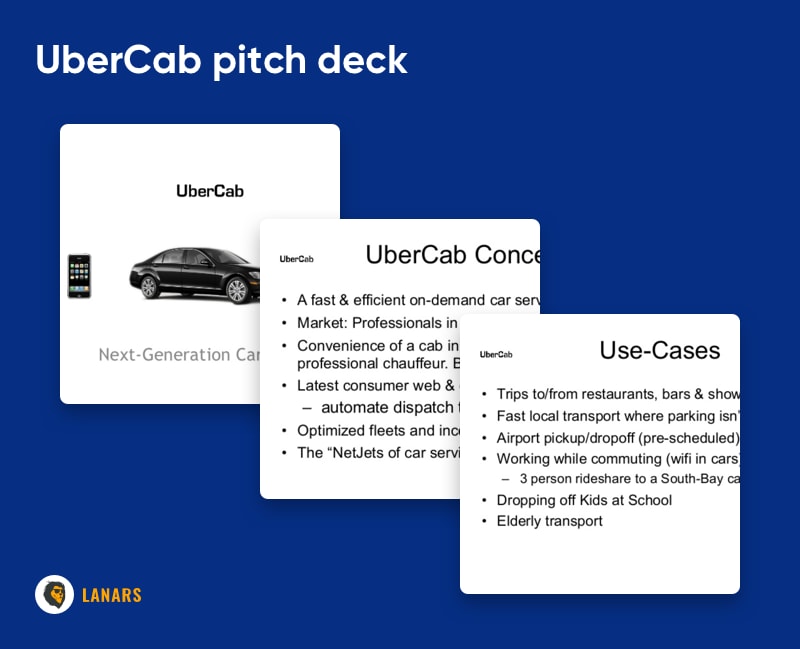In 2020, the question of where to get investments from is hotter than ever. The Lorenz curve, which graphically represents the inequality of wealth distribution across the world, shows that a small number of global market leaders receive more than 85% of profits generated by the market in general. This is why timely and large investments for startups are so important.
The time of romantic prospects for small business has passed. If someone wants to claim their right for a piece of the market share, they must immediately go global and compete with major brands. Otherwise, they will simply be swallowed up. The digital market is no exception.
Although it is mining that has the highest 5-year survival rate for new businesses globally (51.3%), innovative tech startups also attract investments. In this article we’d like to provide you with a basic understanding of how to pitch an app idea. In addition, you’ll get a checklist that helps you to prepare for pitching.
Create Your Pitch Deck
To launch your startup you need a business plan. When presenting your projected business to investors, you need to prove that you are capable of bringing your business plan to life. At the same time, you have to consider that venture capitalists usually have a large number of startups to choose from and their time is limited. A pitch deck is a shorter form of your business plan combined with market survey results that prove your idea has the potential to produce profits and ROI, (return on investment).
A pitch deck is aimed at convincing investors that you’ve got enough experience, skills, market area understanding to execute your business plan.
A pitch deck is a short document that can take the form of visual presentation, report, video, or printed booklet. You can use one or all of them at the same time. A good pitch deck should take no more than 20 minutes to hear, watch, or read. After the investors have studied it, the Q&A (interview) session will begin.
You may wonder how to pitch an app idea in the most efficient way? You could use the Uber pitch deck (2008) or the one created by Airbnb as a source of inspiration. General rule: try to use not more than 10 working slides for a presentation, or a video no longer than 5 minutes, and keep your speech as condensed as possible.
A common pitch deck consists of several parts:
- Names and idea title
- Team and their skills
- The problem you are going to solve (integrate customer study)
- Your solution
- Product description (show a prototype if possible)
- Competitive advantages
- Business model
- Market size and overview, market adoption
- Competitors
- Financials, investing terms
- Contacts
It is also important to use at least 30 point font in the case of a visual presentation or demo video and avoid too much text on your slides. Replace heavy text parts with comprehensive infographics, photos, and animation, and craft your first slide so that it works as your elevator pitch.
Your Pitch As Your First Product
An average pitch consists of formal and informal parts, where you should show both: your soft and hard skills. If you are interested in how to pitch an app idea to investors and getting what you want from them, take your pitch as your first product.
A product approach means that you know what you are offering (startup idea execution), what you need (investment), whom you are dealing with (investor specifics), and who is your ‘competitor’(alternative ways for investors to spend their money). To present your business idea execution plan effectively, follow the steps we outline below.
Get Access To The Right Investors
If you know nothing about your target audience, you have very little chance of selling your product. In the case of startup idea pitching to investors, this rule doesn’t change. Look at your idea from the investors’ perspective and find out what kind of venture capitalist is likely to be interested in it. By doing this, you will reach the right stakeholders without wasting time on those who are not your target audience.
There are several common investor types:
- Venture capital
- Accelerator
- Micro VC
- Startup syndicates
- Angel groups
At LANARS, we advise that you create a list of potential investors considering their investing history, operating area, or even psychological portrait. Keep in mind that across the tech world, you can’t just introduce yourself to investors face-to-face (unless there is an open call for projects). So you will need a door-opener or a mediator. That can be a startup-oriented corporate lawyer, a startup recruiter, or an entrepreneur with wide professional experience. You can also use the services of a portfolio company.
How to Pitch an App Idea: Research Who Your Investors Are
You might have a long list of potential investors, so you can spread your standardized introduction idea among them. However, it is better to personalize them, and to do so you need to know a lot about your venture capital firms and individual investors. The most important points are the following:
- Type of investor
- The average amount of investment per project
- Preferred tech business area
- Names of companies that have raised investments from them and if they succeeded
- Personal features of investors, tastes, and interests
Research says that venture capital companies receive over 1,000 proposals each. Most of them invite for pitching businesses that require $250,000 or more. If you need less, try to find individual investors and make a personalized approach to them.
Personalize Your Pitch for Every Investor
To present your idea and its execution strategy effectively, try to adjust your basic pitch deck with personalized details. For example, you can integrate a prototype showcase into your pitch, where the app prototype will be somehow related to the personalities you are pitching an idea to or their areas of business. Use a website to show the prototype.
Another way to appeal to investors is to show them you are brave enough to execute your business idea using their values and language.
If you have enough time and resources, launch an MVP of your product, collect market analytics and real users’ feedback and then come to investors with ideas on how to develop the product further and enter new markets. Read our article on How to Build an MVP to find out more.
Test and Improve Your Pitch
A Lean Startup approach is based on constant product improvements and making conclusions about how it really works. We recommend that you change your pitch a little after each presentation to investors. Model your first pitch using a mind map with all the suggestions and hypotheses about its form and content.
If the last time you pitched the same idea was some time ago, update your pitch with data based on the current state of your target market.
You may also hire or invite an expert to supervise your pitch and business plan. Pick a person with a background in the same business area or specific background (graphic design, business development, oratory, etc.). Remember that anyone can help you improve your pitch as a product by giving their feedback. For more inspiration — check Facebook pitch deck (2004) and BuzzFeed pitch deck.
What to Focus On with Your Pitch: 4 Options
If you come to the question of how to pitch an app idea, you’ll soon definitely find yourself looking for a subject to focus on within your pitch. Certainly, your short-term reason to conduct a pitch is to raise capital to build or improve your business. However, you need a focal point that will click with investors.
A common mistake is to focus entirely on your product. You might have a deep understanding of it and like it as your brainchild, but investors might not have the same feeling. Instead, hook them with one of these facts:
- Your idea is up-to-date, it covers modern customers’ needs;
- Your product performs a unique tech solution no one has ever tried;
- You’ve discovered a new market segment;
- Your market is big enough to produce significant revenue (it’s great if your startup could serve a global market);
- You are an expert in your field, with advanced soft skills and a proven reputation;
- Your product has an unfair advantage (or an exclusive one) that no one else has.
An advanced option is to combine those factors and represent your idea from several optimistic perspectives. Keep in mind that any investor is ready to lose some of their investment as they presume that at least 1 out of 10 projects will multiply profits a thousand times, while 3 out of 10 will be just modestly profitable.
How can you find what to emphasize in your particular case? Elevator speech will help you to test every option. Check if the key strength of your product is an advanced tech approach, exclusive target market you’ve studied, or whether it helps to resolve a current painful issue for many.
2020 is a year where you have to take a pitch path carefully: in 2017, venture capital funding reached a peak within a decade — $155 billion. Now venture capitalists tend to select significantly fewer startups to invest in. You will need to really stand out to be selected!
Add a Story to Your Pitch
Besides being a product, a pitch is also a story that you tell to your investors. Pitches are usually performed by startup founder or co-founder orally with visual support. Just like any other speech, this one should be engaging, memorable, convincing, and clear. If you are puzzled over how to pitch an app idea in front of venture capitals, think of them as people who digest information efficiently in the form of a story.
Create a story that will make facts, figures, and schemes clearer and less boring, as well as capturing the investors’ attention from the very beginning and keep it to the end of your speech, use our checklist to help you:
- Choose your hero and their enemy and think of a conflict between them;
- Structure your story keeping in mind that there should be an introduction of a hero and an enemy, a climax, and a resolution;
- Find the right tone of voice to integrate storytelling into your pitch, decide on a style.
Finally, make a storyboard, where each of your slides guides investors through each story milestone. Then, develop your characters, by using investor research and the target audience. Enhance your speech with emotional emphasis: use jokes and dramatic tone when needed. Practice your pitch and present it to some of your partners or business incubator colleagues to improve.
7 Rules of How to Pitch an App Idea
Although a pitch is a highly-standardized genre, you can always add a creative injection to your speech for investors. Here are some pitch development rules from LANARS clients that may help you:
— Make your pitch an investing pitch, pitch your projected deal
How to pitch an app idea to investors you may think about. Your pitch is not for end-users, so you do not have to describe purely the benefits of the product. Focus on the benefits of investing in your project: an effective business model, exclusive expertise, and business scaling plans.
— Pay attention to your competitors
Your product always has direct or indirect competitors, as well as substitute goods even if you haven’t thought about them before. Show investors, you have an idea of how to build marketing.
— Analyze target audience pain points
You need to prove to investors that your product will be in demand. To do this, you must study the pains, problems, and decision-making criteria of your potential customers. This should not be your subjective opinion.
— Make it clear that your startup will become financially sustainable
If you do not have direct competitors because such businesses have not survived (for example, their product was unprofitable), you need to prove to investors that the same thing will not happen to you. Use our guide to proceed with your budgets — How to Write a Tech Startup Business Plan.
— Always provide investors with a 3D context
Talk to investors about other tech discoveries within the industry, share information about competitors' products, describe the lifestyle of the target audience, and inform investors about what kind of background your startup partners have.
— Present an MVP and prove that you’ve got a complete team
If you do not have a team, then it will be nearly impossible to get investment. If you do not have evidence that it is your product that is capable of being in demand and that your marketing hypothesis is correct, the investor cannot be sure that his investment is reasonable. Read How to Hire Dedicated Developers article to learn more about creating a balanced team.
— Try to make your speech shorter
You do not have to say everything in 60 seconds. But the longer your speech is, the less attentive investors are at the end. Remember that if something is unclear for them, they will ask you a question after the main part of the session.
The Power of Personality. Why Is Personality So Important?
There are startups that received investments even having had the figures messed up in their pitch. They’re also quite a lot of examples where startup owners could not answer investors’ questions during the pitch, however, they were able to prove that they had an expert in their team who knew the answer.
If you don’t know how to pitch an app idea yet, start from establishing your personal authority positioning yourself as a future entrepreneur and develop loyal networks. There are some reasons why personality is more important for venture capitalists then your business model, startup idea, or figures:
#1 Rare idea is perfect, be a smart student
Investors do not expect a 100% viable idea from you. They are interested in a person who is able to learn, remain flexible, and quickly adapt to the real market conditions. Show them your potential to grow as a startup owner.
Even if your idea was not viable initially, you can pivot, (radically change the initial course of the project) based on the real market data that you receive. The fact that you can quickly master a new environment and make quick and smart decisions is more important for the investor than the quality of your basic idea.
#2 Know your resources
Managing a startup is not about doing all the tasks yourself and knowing all the answers. Instead, you must have a strong and well-coordinated team and enough technical resources to launch the product. Show that you are a good manager and delegater.
#3 Reputation and networking matter
Do not wait for the moment when your business plan is completely ready. Work on your reputation from early on. Tell people around you about your plans, try to make informal acquaintances among investors, and collect letters of recommendation from your managers and partners, whose names are authoritative.
#4 Use your strengths considering communication
If you want to find an answer to the question of how to pitch an app idea to investors successfully, look at yourself first. Determine what traits in your communication style will induce sympathy in your interlocutors and what makes you feel confident during a conversation. Use those communication techniques that you are keen on and therefore best at.
Conclusion
There are many ways to increase your chances of success during a pitch. For example, you can rely on the latest technology: according to Forbes, tech startups in the USA, on average, receive $102,000 of investments (this is twice as much as the average business in other sectors). The key to success is also a well-chosen team and a dynamic pitch deck.
If you have to pitch your idea for the first time and you still do not know the answer to the question of how to pitch an app idea, treat the pitch deck as a product. Examine your investors’ background, collect information about your market niche, test the MVP of your business, and pitch a deal, not a product for end-users.
Remember that a pitch is an oral genre, and also that your listeners are primarily people. Make your pitch lively and engaging and try to gain credibility throughout the pitch interview.







Top comments (1)
The presentation is often the only thing investors take with them after a meeting. It needs to stand on its own and leave a lasting impression. Design plays a huge role in how memorable and persuasive that document is. Here you can always find the best pitch deck companies. A clean, focused presentation keeps your vision top-of-mind. And in the world of fundraising, that’s priceless.